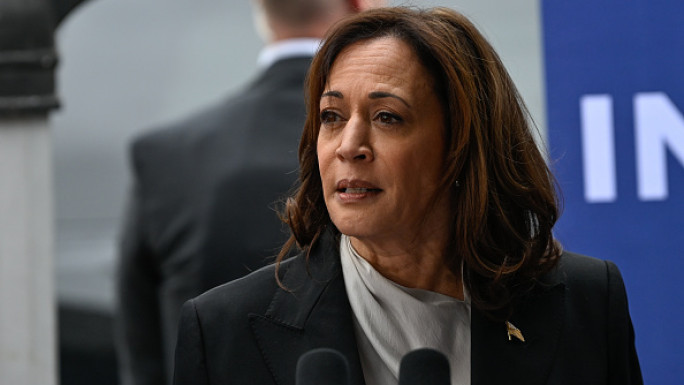
Inside the $14m Egyptian Red Sea Initiative aimed at protecting Egypt's coral reefs

Egypt has recently launched an innovative $14 million initiative known as the Egyptian Red Sea Initiative.
In collaboration with the United Nations Development Programme (UNDP), the Global Fund for Coral Reefs, and the United States Agency for International Development (USAID), this project aims to protect and preserve the Red Sea's coral reefs, which are recognised as some of the most resilient and diverse in the world.
The initiative, running from 2024 to 2030, will focus on preserving approximately 99,899 coral reefs along Egypt's Red Sea. Specifically, conservation efforts will target 13,637 reefs within the Wadi El Gemal National Reserve in southern Egypt and 50,612 reefs in the Red Sea Northern Islands Reserve.
Voices from the field
Several commentators on the new initiative have explained what the project’s outcomes will mean for Egypt.
Egypt’s Environment Minister, Yasmine Fouad, stated in a press release that this initiative is an important step in the national effort to protect Egypt's natural heritage.
She explained that the coral reefs are vital to the marine ecosystem and play a crucial role in supporting the Egyptian economy through key industries like tourism and fishing. Given the increasing threats from climate change, overfishing, and unsustainable tourism practices, she believes that their protection is essential.
Amany Nakhla, Biodiversity Team Lead at UNDP Egypt, also shared her perspective.
Speaking to The New Arab, Amany highlighted that the Red Sea is relatively isolated, with minimal freshwater inflow. This climate leads to limited species exchange and a high degree of endemism, which is particularly notable in the coral reef species found in the Red Sea, many of which are not found anywhere else in the world.
“The coral reefs of the Red Sea cover an area of around 3,800 km². Of the 300 hard coral species identified in the Red Sea, 209 are present in the Egyptian reefs, with almost 10% being endemic. The northern Red Sea has the highest coral diversity, with a total living coral cover of 48% on average. The region is also home to important habitats such as seagrass beds, which are vital nursery areas for numerous fish species. Around 1,000 species of fish live in the Red Sea, with 325 species found in the Egyptian reefs — 17% of which are endemic,” Amany continued.
Amany went on to explain that the coral reefs in the Red Sea are currently facing severe threats. These include rapid population growth along the coast, increasing tourism, rising pollution, coastal development, and intense shipping traffic.
“These challenges lead to solid waste, noise pollution, physical destruction of reefs, sewage discharges, unsustainable fishing practices, and coral mining for construction purposes,” Amany explained.
Then, highlighting the significance of the initiative, Amany stated that the project will strengthen the policy framework for coral reef conservation. It will also encourage sectors such as fisheries, tourism, and waste management to adopt reef-friendly practices, while raising awareness about the importance of these ecosystems.
Additionally, Amany stressed that the initiative will build capacity to monitor the status of coral reefs, support effective national and local decision-making, and develop management plans for the newly established Great Fringing Reef Protected Area.
“This initiative will focus on promoting coral reef-friendly businesses through blended finance opportunities in partnership with banks and financial institutions,” she concluded.
Environmental specialist Wafik Noseir also told The New Arab that the initiative aims to strengthen the resilience of Egypt's coral reefs, known for their rich biodiversity and economic significance.
“Preserving these reefs is crucial not only for biodiversity but also for maintaining the health of marine environments essential for various life forms,” Wafik said.
He further noted that Egypt's coral reef tourism generates around $7 billion annually, largely due to activities centred around these ecosystems. “This initiative seeks to protect this economic asset by fostering sustainable practices that alleviate the impact of climate change and human activities on coral health,” Wafik stated.
“Current threats include climate change, pollution, overfishing, ocean acidification, and habitat destruction — particularly with incidents like Houthi attacks on Red Sea vessels,” he added.
The Red Sea as a natural laboratory
An interesting aspect of this new initiative is the opportunity to use the Red Sea as, in the words of UNDP Resident Representative in Egypt Alessandro Fracassetti, “a natural laboratory to study the effects of climate change on coral communities.”
Alessandro also adds that the initiative could enhance understanding of coral health in the face of climate change: “By protecting this thermal refuge, the initiative aims to strengthen global efforts to safeguard coral reefs and explore adaptive measures that could be applied elsewhere.”
So far, studies show that the Red Sea is a unique marine area where coral reefs are strong and can handle climate change well.
According to Alessandro, by 2020, only 0.7% of these reefs had experienced coral bleaching — a process in which corals expel the algae that live within them, turning them white. This bleaching can be triggered by climate change, changes in water quality, extreme low tides, and pollution.
Unlike in other regions where bleaching can be very harmful, the Red Sea has only experienced two bleaching events so far, in 2012 and 2020, and both had minimal impact on coral health.
Alessandro also reveals that corals in the Red Sea can handle temperatures up to 6°C above the highest summer average.
Measuring success
According to Alessandro, the project's success will primarily be measured by improvements in coral reef health. This includes monitoring the current condition of the reefs and tracking the growth of healthy reef areas.
“Indicators of success will also include the number of partnerships with banks and financial institutions to support reef-friendly businesses, the level of community engagement in conservation efforts, the revenue generated through sustainable financing mechanisms, and the total funds raised for the Egyptian Fund for Coral Reefs,” Alessandro explained to The New Arab.
Alessandro also highlighted that innovative technologies and methods are being applied to monitor and protect coral reefs within this initiative.
He explained, “We are exploring innovative financial instruments such as risk mitigation tools, guarantees, and insurance products to encourage responsible private investment in reef-friendly businesses. A management and business plan for the Great Fringing Reef Protected Area will be developed based on extensive consultations with key stakeholders.”
Crucial partnerships
Speaking about the project's partnerships, especially with UNDP, Wafik highlighted the importance of the agreement between Egypt and UNDP, calling it a crucial step in addressing the serious threats to these vital ecosystems.
Wafik made several remarks regarding the partnership, stating that while the collaboration between Egypt and UNDP is a positive move for coral reef preservation, it must be accompanied by broader actions to tackle climate change and promote sustainable development. “The health of Egypt's coral reefs is vital not only for environmental sustainability but also for the economic well-being of communities that depend on marine resources.”
Alessandro also spoke on the topic, highlighting the significance of international cooperation in enhancing marine conservation efforts. He stated, “In marine conservation, collaboration and partnerships are essential. UNDP has been actively supporting coral reef protection for many years through various initiatives.”
For example, UNDP Egypt has participated in coral reef conservation projects funded by the Global Environment Facility (GEF), Italian Cooperation, and the Egyptian-Italian Debt for Development Programme.
Alessandro further explained, “With over 25 years of partnership with the Ministry of Environment, UNDP brings global best practices in biodiversity conservation and protected area management. International cooperation allows us to share resources, knowledge, and strategies tailored to effectively tackle marine conservation challenges.”
On another note, Alessandro mentioned that the initiative will enhance the capacity of the Egyptian Environmental Affairs Agency (EEAA) and other partners to secure funding and implement their plans effectively.
He added that they will also assess and develop financing mechanisms for Marine Protected Areas (MPAs) and community-based protected areas to support broader marine conservation efforts.
The Egyptian Red Sea Initiative started on September 1, 2024, and will end on September 1, 2030.
Salwa Samir, a Cairo-based journalist, writes about antiquities, human rights, social issues, immigration, and issues concerning children and women.
Follow her on X: @salwasamir2010




![The leader of planned Albanian Muslim mini-state expresses support for Israel [Getty]](/sites/default/files/styles/image_684x385/public/2171709386.jpeg?h=0e714722&itok=RErwaBrE)




